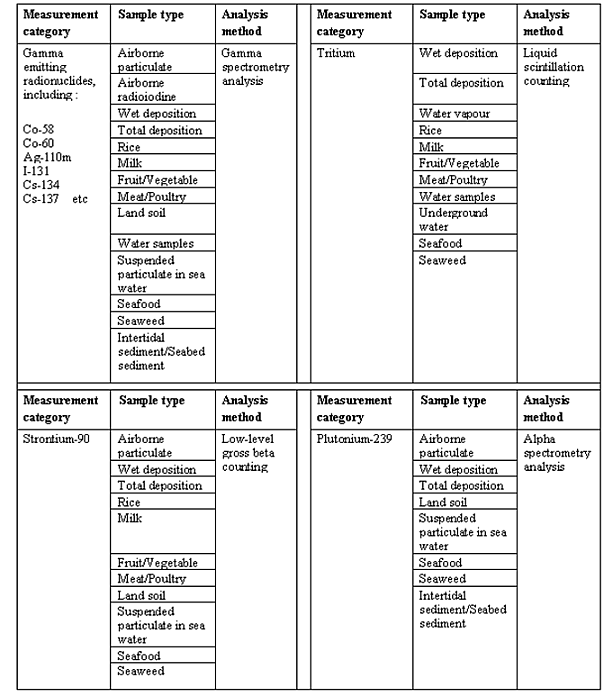Radiation Tidbits - Monitoring of Radioactive Substances
Written by: Ma Wai-man and Yeung Siu Wai
Besides real-time monitoring of the ambient radiation level in Hong Kong, the Environmental Radiation Monitoring Program (ERMP) also includes regular examination of food, soil, dust, water samples etc. To monitor the long-term changes of artificial radioactive substances in the environment of Hong Kong, the activity concentration of alpha, beta and gamma emitting radionuclides in the samples are measured.
After the environmental and food samples are collected, they will first be screened, recorded and chemically treated. They will then be analysed by various equipment at King's Park Radiation Laboratory to determine the concentration of specific radionuclides. The operation of nuclear power station and the associated nuclear fission process would normally produce some radioactive substances not found in the natural environment. Noting the close proximity of the nuclear power stations at Daya Bay to Hong Kong, some of these radionuclides are selected for examination. These radionuclides include plutonium-239 (alpha emitter), tritium and strontium-90 (beta emitters), as well as cobalt-60, iodine-131 and cesium-137 (gamma emitters). A list of those radionuclides monitored and their associated sample types are given in Table 1.

Table 1. Various environmental/food samples and radionuclides under monitoring
The ERMP has been running for more than two decades. Based on the results so far, there are no observable changes in the concentration of artificial radionuclides in Hong Kong's environment samples and foodstuffs. For those who are interested in the results of ERMP in 2009 or in the past, please read the Summary of Environmental Radiation Monitoring in Hong Kong 2009 or the Annual Report of Hong Kong Environmental Radiation Monitoring available in the Observatory's website.
 Back to Top
Back to Top